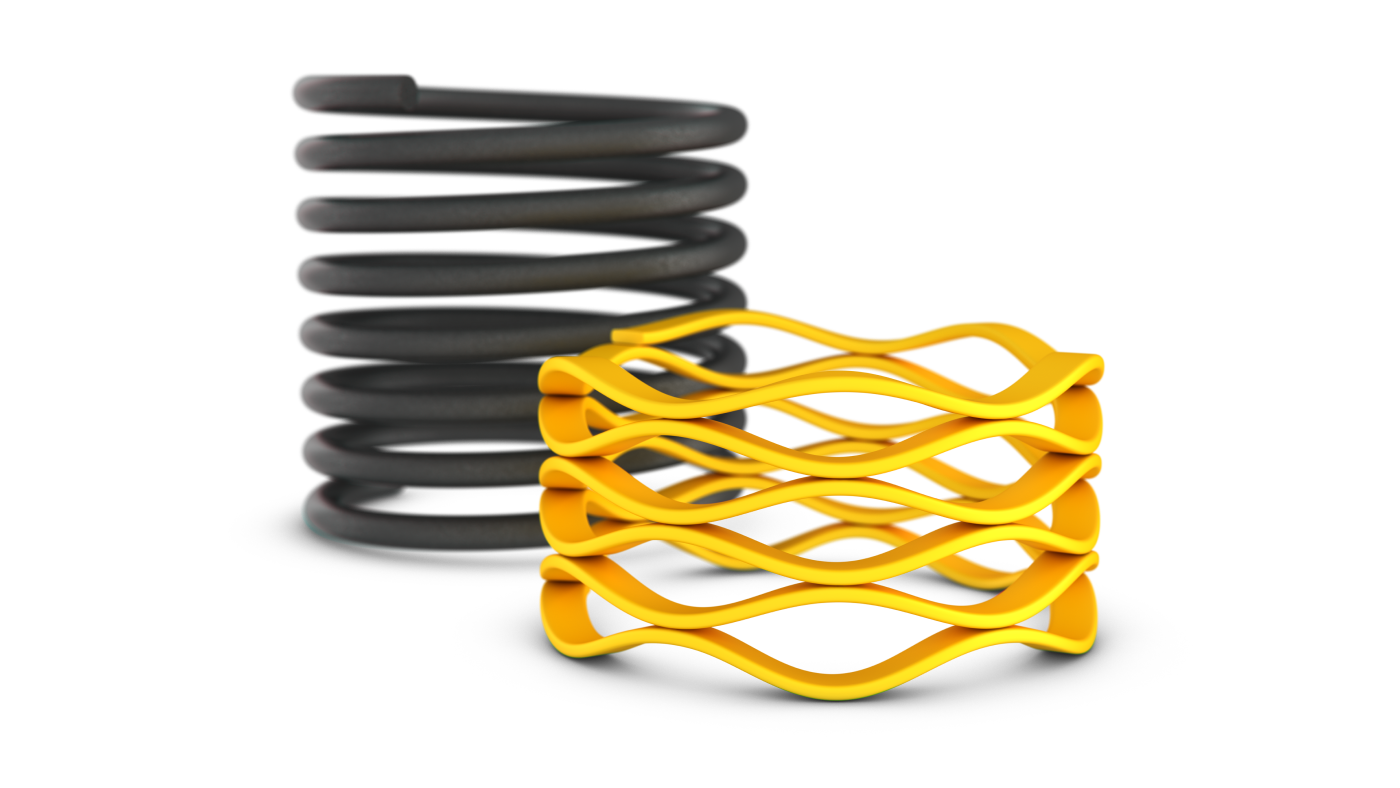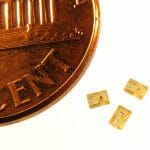~ A comparison of Crest-to-Crest™ wave springs and round wire coil springs ~
Crest-to-Crest™ wave springs can offer similar loads and deflection to traditional coil springs, but at around half the height. They can reduce axial space by up to 50 per cent, leading to an overall decrease in assembly size, weight and cost. For design engineers looking to utilise these benefits and discover if a Crest-to-Crest™ wave spring can replace a coil spring in their application, Simon Ward, technical manager at TFC, European partner of Smalley, answers some common questions about wave springs.
What are the key differences?
Wave springs and coil springs are both types of compression spring, primarily used to provide an axial force in either a static or dynamic application. However, there are differences. Coil springs are typically made of round wire, whereas wave springs are made from flat wire. This provides an opportunity to significantly reduce working heights within any assembly. Space-saving is key in medical applications, such as handheld instruments like dental tools and insulin pens, which must be lightweight and compact.
A wave spring, true to its name, utilises a sinusoidal waveform to generate the required axial force. A Crest-to-Crest™ wave spring has multiple turns to build up the free height of the spring to achieve the required deflection characteristics.
Another difference is the way that wave and coil springs store and release energy. A coil spring has a pitch angle and is torsional so it can twist as it compresses, meaning not all force is necessarily aligned with the axis. On the other hand, wave springs rely on bending — as load is applied, the waves begin to flatten, providing an upward force, allowing for complete axial load transmission.
How do I swap from using a coil spring to a Crest-to-Crest™ spring?
For design engineers currently using coil springs, switching to a Crest-to-Crest™ wave spring needs careful consideration. There is an extensive range of standard sizes that may suit but in 70-80 per cent of cases we will develop a bespoke design to maximise the benefits.
Before designing any wave spring, it helps for TFC to understand the space constraints and the spring performance characteristics. The final design is then achieved by modifying the number of waves and turns, adjusting material cross section and wave heights. Choice of material also affects the design and will normally be dictated by the operating temperature and environment where the spring must function.
If a Crest-to-Crest™ spring does not suit the application, then we have several other options including single turn and nested springs.
To identify the correct wave spring for your application, the best thing to do is work with a specialist. An experienced TFC engineer can help you find the ideal wave spring, to help you achieve design breakthroughs.
For more information, visit https://www.tfc.eu.com/products/smalley-wave-springs-spirolox-rings/wave-springs.





